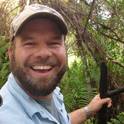Previously published multidisciplinary studies in the Miramichi and Bouctouche rivers (New Brunswick, Canada) noted significant changes in fish health parameters, including elevated tissue levels of organic contaminants and a wide range of physiological disturbances, in mummichog Fundulus heteroclitus (L.) from a site on the Miramichi River that received bleached kraft pulpmill and municipal effluent. The present study reports differences in the abundance of individual parasite species, as well as parasite infracommunity and component community composition, in mummichog from both rivers. These differences were evaluated in relation to host (size, condition, immune function, tissue organochlorine contaminant levels) and environmental (faecal coliform counts, salinity, temperature) data derived from the previously published studies. Overall, 18 parasite species were identified, the most common of which were Ascocotyle sp. larv., Ornithodiplostomum sp. larv., Posthodiplostomum sp. larv., and Proteocephalus filicollis (Rudolphi, 1802). There were broad differences in parasite community structure and composition between rivers and within rivers, the most prominent pattern being a pronounced difference between sites in the upper and lower estuary of each river that was likely driven by salinity. Mean infracommunity richness was also positively related to faecal coliforms (considered here as a surrogate measure of eutrophication via municipal sewage), and both were highest at the most polluted site. We noted no other significant relationships. Thus our data suggest that the parasite communities in these two estuaries were primarily structured by large upstream/downstream ecological gradients in salinity, and secondarily by eutrophication due to pollution by municipal and industrial effluents. Overall, our results highlight the value of coordinated multidisciplinary studies for understanding the factors that shape parasite abundance and community structure.
Available at: http://works.bepress.com/christopher-blanar/10/
